 Under the banner of Operation Godwit an international team of scientists has been studying the Icelandic black-tailed godwit since the 1990s. Unique combinations of colour rings placed on the birds’ legs on their breeding grounds in Iceland and on their wintering grounds in Western Europe allow individual birds to be identified, and mean that when birdwatchers around Europe report sightings of these godwits the scientists can plot and study their movements over time.
Under the banner of Operation Godwit an international team of scientists has been studying the Icelandic black-tailed godwit since the 1990s. Unique combinations of colour rings placed on the birds’ legs on their breeding grounds in Iceland and on their wintering grounds in Western Europe allow individual birds to be identified, and mean that when birdwatchers around Europe report sightings of these godwits the scientists can plot and study their movements over time.
The research has led to ground breaking findings on the life of these amazing birds and the wetland habitats where they live.
The aim of Operation Godwit is to unravel the mysteries of the life cycle of this elegant wading bird by carrying out fieldwork in different countries within the Icelandic black-tailed godwit’s range, and through following the movement of individually colour-ringed birds. The project relies on bird watchers and interested observers across Western Europe reporting their sightings of these colour ringed godwits.
Schools Involvement
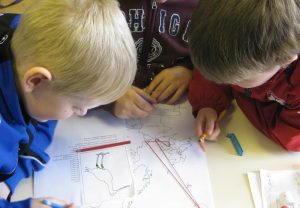 Since October 2006 Willie McSweeney’s and Guðný Róbertsdóttir’s class pupils have been taking part in the International Schools Godwit Project. Their classes became involved not only because they have two very enthusiastic teachers, but because both schools are in the middle of the breeding and wintering areas for the Icelandic black-tailed godwit.
Since October 2006 Willie McSweeney’s and Guðný Róbertsdóttir’s class pupils have been taking part in the International Schools Godwit Project. Their classes became involved not only because they have two very enthusiastic teachers, but because both schools are in the middle of the breeding and wintering areas for the Icelandic black-tailed godwit.
The project has been a fantastic success with the pupils not only learning first hand about the godwits and their migrations but also about their local environment and each other’s countries and culture. This has led to strong links between the two schools. The teachers have been able to use the data they gather from Operation Godwit to teach other subjects on the class curriculum such as Science, Maths, Geography and Art in a very practical way.
How do the schools take part?
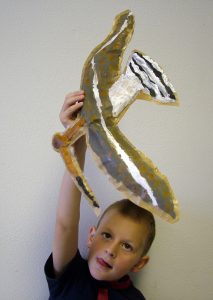 The classes receive sighting information from birdwatchers of colour ringed black-tailed godwits seen in Cork Harbour and around the county and Siglufjörður on the northern coast of Iceland. They then send the information to two of the study organisers, Tómas Gunnarsson, in Iceland and Pete Potts in England. In return Tómas and Pete send them the bird’s migration life history showing where and when the godwits were caught and colour ringed and where and when the birds have been seen since.
The classes receive sighting information from birdwatchers of colour ringed black-tailed godwits seen in Cork Harbour and around the county and Siglufjörður on the northern coast of Iceland. They then send the information to two of the study organisers, Tómas Gunnarsson, in Iceland and Pete Potts in England. In return Tómas and Pete send them the bird’s migration life history showing where and when the godwits were caught and colour ringed and where and when the birds have been seen since.
When the class gets godwit migration life histories each pupil “adopts” a bird and using the life history information draws lines on a map of Europe showing where it has been since it was colour ringed. The map is then put up on the wall of the class. The pupils also place a red dot on a big map of Iceland to show where their godwits were ringed and where the Siglufjörður godwits spend the winter, and plot the movements of “their” birds on Google Earth. To date the classes have collected over 50 life histories of godwits seen in CorkHarbour or ringed in Siglufjörður, and they are constantly looking to add more to their tally.
By taking part in the project the pupils learn first-hand the importance of global citizenship and how we are all linked by the natural world we live in.
Field Trips
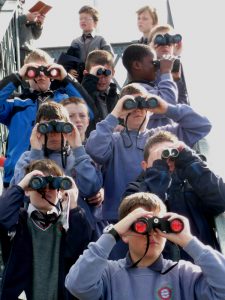 The pupils also go out looking for colour ringed godwits during the school year (September to May). They try to make at least two trips to study the godwits each school year. One in the autumn or early winter when all the godwits have returned from Iceland and the second in March or April when the godwits are gathering before flying north to breed in Iceland. The Cobh pupils take the 15 minute train ride from Cobh to Glounthaune. The station platform at Glounthaune is perfect for studying the godwits and other wetland birds. It overlooks one of the most important estuary areas for black-tailed godwits and other wetland birds in CorkHarbour. They record all the wildlife they see on the trip. The project encourages fieldwork and highlights in a simple way the value of record of data.
The pupils also go out looking for colour ringed godwits during the school year (September to May). They try to make at least two trips to study the godwits each school year. One in the autumn or early winter when all the godwits have returned from Iceland and the second in March or April when the godwits are gathering before flying north to breed in Iceland. The Cobh pupils take the 15 minute train ride from Cobh to Glounthaune. The station platform at Glounthaune is perfect for studying the godwits and other wetland birds. It overlooks one of the most important estuary areas for black-tailed godwits and other wetland birds in CorkHarbour. They record all the wildlife they see on the trip. The project encourages fieldwork and highlights in a simple way the value of record of data.
They always have a great time and always see at least some godwits, as well as other wetland birds such as redshanks, curlews, dunlin, oystercatchers and shelduck. On one trip in April 2008 the whole class was lucky enough to see a colour-ringed godwit really close through a telescope, and plenty of godwits and other wetland birds up close.
In Siglufjörður the pupils of Grunnskóli Siglufjarðar keep in touch with Scoil Iosaef Naofa during the time the godwits are in Ireland and England (August – April) and then in late April and May they go out looking for the godwits as they arrive back to Siglufjörður to breed. On one occasion they found a colour ringed godwit breeding near the school which had been seen at Glounthaune, CorkHarbour the previous winter. The finding of such a bird makes a lasting impression on the pupils in both countries. Their awareness of their environment is greatly enhanced as a result.
This project was devised and developed by Jim Wilson, Willie McSweeney, Guðný Róbertsdóttirs, Tómas Gunnarsson, and Pete Potts.
You can help by reporting sightings
 If you should see a colour ringed Black-tailed Godwit check out or page on reporting a sighting at http://www.scoiliosaefnaofa.com/Godreports.htm
If you should see a colour ringed Black-tailed Godwit check out or page on reporting a sighting at http://www.scoiliosaefnaofa.com/Godreports.htm
Sighting information should be sent to [email protected]
We will then send you the sighting history for the bird you saw.
For further information on the project visit www.scoiliosaefnaofa.com/Godwit.htm or email [email protected]
Photo Credits: All photos courtesy of Jim Wilson, used here with permission
The story of OLOX
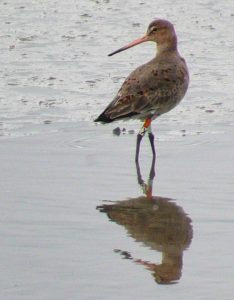 OLOX — or Orange Lime Orange White X — is a godwit ringed as a chick at Grafarvogur, Reykjavík in April 2002. The data below show the reported sightings of OLOX up to autumn 2010, showing how much colour ringing of wetland birds can show us about their movements.
OLOX — or Orange Lime Orange White X — is a godwit ringed as a chick at Grafarvogur, Reykjavík in April 2002. The data below show the reported sightings of OLOX up to autumn 2010, showing how much colour ringing of wetland birds can show us about their movements.
|
27.04.02 |
Grafarvogur, Reykjavík, SW Iceland (ringed as a chick) |
|
29.04.02 |
Grafarvogur, Reykjavík, SW Iceland |
|
30.04.02 |
Grafarvogur, Reykjavík, SW Iceland |
|
21.07.02 |
Vallá, Kjalarnesi, SW Iceland |
|
20.09.02 |
Cork Harbour, Co. Cork, S Ireland |
|
04.10.02 |
Cork Harbour, Co. Cork, S Ireland |
|
28.10.02 |
Cork Harbour, Co. Cork, S Ireland |
|
15.11.02 |
Cork Harbour, Co. Cork, S Ireland |
|
16.11.02 |
Cork Harbour, Co. Cork, S Ireland |
|
18.11.02 |
Cork Harbour, Co. Cork, S Ireland |
|
19.04.04 |
Loch Beg, Londonderry, N Ireland |
|
01.10.05 |
Cork Harbour, Co. Cork, S Ireland |
|
02.10.05 |
Cork Harbour, Co. Cork, S Ireland |
|
02.10.05 |
Cork Harbour, Co. Cork, S Ireland |
|
03.10.05 |
Cork Harbour, Co. Cork, S Ireland |
|
05.10.05 |
Cork Harbour, Co. Cork, S Ireland |
|
12.10.05 |
Cork Harbour, Co. Cork, S Ireland |
|
22.11.05 |
Clonakilty, Co. Cork, S Ireland |
|
10.02.06 |
Cork Harbour, Co. Cork, S Ireland |
|
01.08.06 |
Shannon Airport, Co. Clare, W Ireland |
|
25.08.06 |
Glounthaune, Cork Harbour, Co. Cork, S Ireland |
|
06.12.06 |
River Blackwater, Lismore, Waterford, S Ireland |
|
03.01.07 |
Blackwater, Waterford, S Ireland |
|
06.04.07 |
Motney Hill, Medway Estuary, Kent, SE England |
|
02.07.07 |
Sogn, Kjós, SW Iceland |
|
12.09.07 |
Réserve Naturelle du Marais d,Yves, Charente-Maritime, W France |
|
30.01.08 |
Glounthaune, Cork Harbour, Co. Cork, S Ireland |
|
18.03.08 |
Harper´s lsland, N Channel, Co. Cork, S Ireland |
|
16.09.08 |
Glounthaune, Cork Harbour, Co. Cork, S Ireland |
|
30.03.09 |
Glounthaune, Cork Harbour, Co. Cork, S Ireland |
|
28.04.09 |
Sjávarhólar, Kjalarnesi, SW Iceland |
|
22.09.09 |
Glounthaune, Cork Harbour, Co. Cork, S Ireland |
|
01.10.09 |
Glounthaune, Cork Harbour, Co. Cork, S Ireland |
|
07.07.10 |
Lambadalur, Dyrafjordur, NW Iceland |
|
12.09.10 |
Glounthaune, Cork Harbour, Co. Cork, S Ireland |
|
23.09.10 |
Glounthaune Estuary, Cork Harbour, Co. Cork, S Ireland |


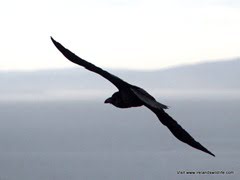
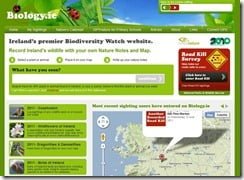
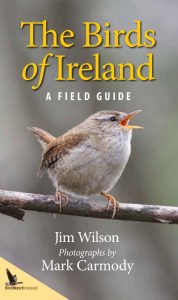




2 comments
Mary Carvill
On 16.4.21@ 8.15 pm at low tide at South Wall …on river side at outflow of sewage treatment plant saw a black tailed godwit (,among 200+ ,Godwits ) with red and black ring on left leg as in photo above and with a wide lime green ring on right leg with two white bands….
Margaret o'Leary
Excellent work, Jim. Amazing what children will do when challenged in a positive way by enthusiastic leaders. Well done to all!